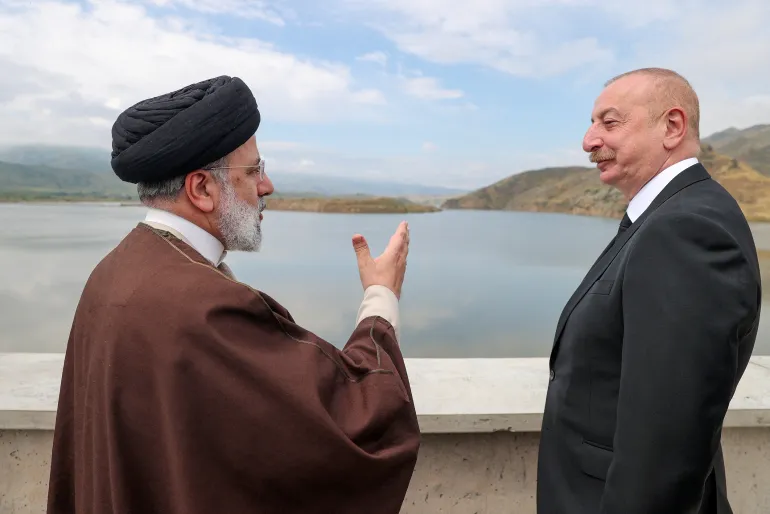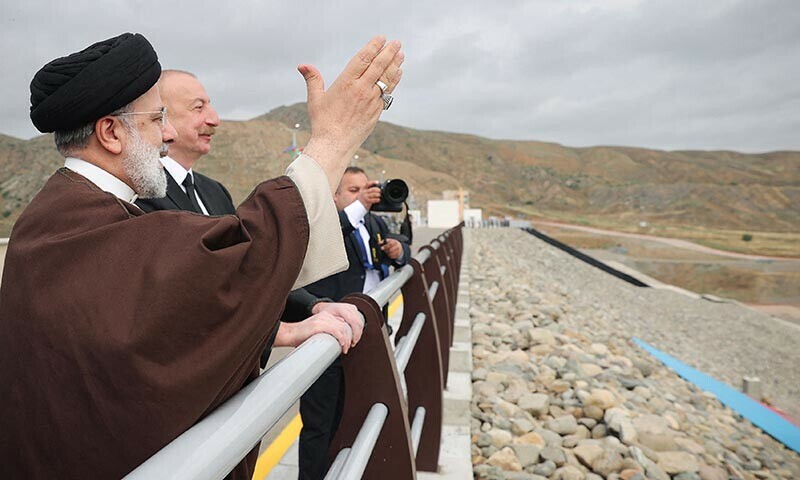Iranian President Ebrahim Raisi, one of the most powerful and controversial figures in the Islamic Republic’s leadership, was killed on Monday when the helicopter he was traveling in crashed in a remote area of East Azerbaijan province. The crash also claimed the lives of several other high-ranking Iranian officials who were accompanying Raisi on the flight.
The news of Raisi’s death in the tragic helicopter incident has sent shockwaves through Iran and the larger Middle East region. At 62 years old, Raisi was being groomed as a potential successor to the aging Supreme Leader Ayatollah Ali Khamenei, who has held the nation’s top leadership position since 1989.
Raisi’s hardline conservative credentials and brutally repressive track record positioned him as a protege and favorite of Khamenei and the Islamic Revolutionary Guard Corps (IRGC). His rise through the ranks of the judiciary and eventual presidencymirrored the ideological hardening seen in Iran over the past decade.

A Hardliner’s Ascent to Power
Born in 1960 in the holy city of Mashhad, Raisi hailed from a family with supposed direct lineage to the Prophet Muhammad. He pursued religious studies in the seminaries of Qom and Mashhad before joining the judiciary in the years after the 1979 Islamic Revolution.
It was in 1988, near the end of the bloody Iran-Iraq War, that Raisi cemented his reputation as a merciless enforcer of the regime’s revolutionary doctrine. He served on the “Death Committees” that oversaw the extrajudicial executions of thousands of political prisoners, trials often lasting just minutes, on charges of harboring anti-regime sentiments.
Human rights groups estimate between 4,000-5,000 prisoners across Iran were hanged or shot in just a matter of months in 1988. Amnesty International called the massacre a “crime against humanity.” For decades, the regime denied or covered up the scope of the killings, which Raisi has refused to acknowledge or apologize for.
Raisi steadily climbed the ranks, becoming Tehran’s chief prosecutor in 1989 before being appointed to senior roles overseeing the suppression of dissent and imposition of harsh Islamic punishments like amputations. He was appointed head of the judiciary in 2019 as Western nations levied sanctions on him for human rights abuses.
Authoritarian Rule as President
In 2021, Raisi finally ascended to the presidency, winning just under 62% of votes in an election heavily rigged to exclude his strongest competitors. Turnout was historically low around 48% as millions of Iranians heeded calls by activists to boycott a fundamentally undemocratic poll.
His tenure as president saw an emboldened Iran making aggressive moves against regional rivals and the West. Raisi endorsed the ramping up of uranium enrichment to near-weapons grade levels and stoked a shadow conflict with Israel that saw Iranian missiles and drones strike deep inside Israeli-controlled territory.
Most controversially, Raisi’s security forces brutally suppressed the nationwide youth-led protests that erupted in September 2022 following the death of 22-year-old Mahsa Amini after her arrest by morality police. Over 500 protesters were killed, including dozens of children, in a crackdown involving live ammunition, beatings and mass arrests.
On the economic front, Iran saw little tangible improvement for ordinary citizens’ lives despite Raisi’s populist promises. Crippling U.S. sanctions, institutional corruption and mismanagement continued to blight the country’s prospects even as its pariah nuclear program advanced.
Opaque Succession to Follow
With Raisi now dead, the line of succession in Iran’s leadership is highly uncertain. Under the system of Velayat-e Faqih (Guardianship of the Jurist), the Supreme Leader holds ultimate political and religious authority, while the presidency is technically a secondary role.
At 83, Khamenei remains in frail health but is unlikely to step aside voluntarily. Hardliners will now quietly jostle for position to determine who will assume his all-powerful mantle. The IRGC, led by members of Raisi’s generation, will almost certainly seek to install a firmly ideological and anti-Western figure to continue confronting Iran’s enemies abroad and stifling dissent at home.
For Iran’s restless population, especially its youth who make up a majority, the helicopter crash deprives them of a familiar, clearly identifiable face of repression. But whether Raisi’s permanent successor will pursue any substantive reforms or accountability for past atrocities remains highly doubtful.
The coming period of backroom machinations and eventual power transition will be a critical juncture for the Islamic Republic’s hardline establishment. But the nation’s deepening domestic and international crises may ultimately prove larger than any individual leader can overcome.





